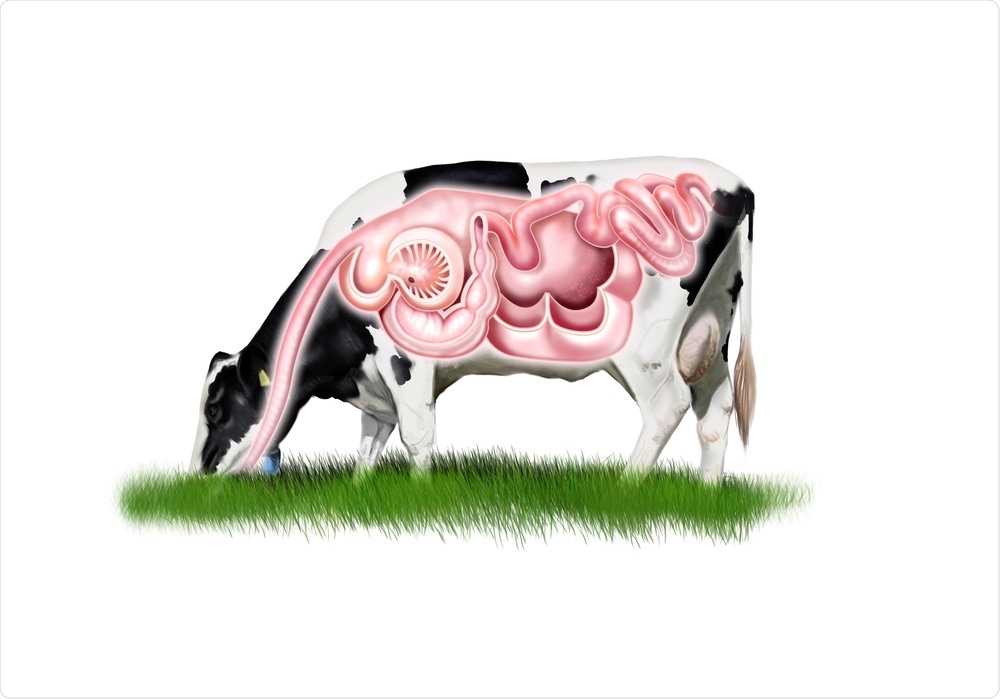Austrian researchers discovered that bacteria present in cow’s rumen, one of the four compartments of its stomach, could digest materials like plastic, which is especially tough to break down. This discovery represents a sustainable way for plastic litter reduction.

Cows Digestive System. Image Credit: Nicolas Primola/Shutterstock.com
Researchers suspected the use of such bacteria, as the cow’s diet contains natural plant polyesters.
A huge microbial community lives in the rumen reticulum and is responsible for the digestion of food in the animals. So, we suspected that some biological activities could also be used for polyester hydrolysis.”
Dr Doris Ribitsch, University of Natural Resources and Life Sciences, Vienna
Polyester hydrolysis is a kind of chemical reaction that results in the decomposition of polyesters. The microbes of the rumen are capable of breaking down similar materials, and hence the researchers presumed these microbes could break down plastics as well.
Ribitsch and co-workers analyzed three kinds of polyesters—polyethylene terephthalate, generally known as PET, a synthetic polymer commonly used in packaging and textiles. The other polyesters are a biobased material (polyethylene furanoate, PEF) made from renewable resources and a biodegradable plastic often used in compostable plastic bags (polybutylene adipate terephthalate, PBAT).
The scientists procured rumen liquid from a slaughterhouse in Austria to obtain the microorganisms under experimentation. They then incubated the liquid along with the three types of plastics to be tested to effectively understand the breakdown process. The plastics were tested in both film and powder forms.
The results showed effective breakdown of plastic powders upon incubation with rumen liquid, quicker when compared to plastic films. The findings were published in Frontiers in Bioengineering and Biotechnology.
Rumen liquid was found to be more effective when compared to single microorganisms, indicating the synergistic advantage of the microbial community. The combination of enzymes rather than a single enzyme makes the difference.
The study is accomplished on a laboratory scale.
Due to the large amount of rumen that accumulates every day in slaughterhouses, upscaling would be easy to imagine.”
Dr Doris Ribitsch, University of Natural Resources and Life Sciences, Vienna
The researchers also warn that these kinds of research could be cost-prohibitive, as the lab equipment is expensive because they require pre-studies to examine microorganisms.
Ribitsch looks forward to performing further research on the topic claiming microbial communities are underexplored as a potential eco-friendly resource.
Source:
Journal reference:
Quartinello, F., et al. (2021) Together Is Better: The Rumen Microbial Community as Biological Toolbox for Degradation of Synthetic Polyesters. Frontiers in Bioengineering and Biotechnology. doi.org/10.3389/fbioe.2021.684459.